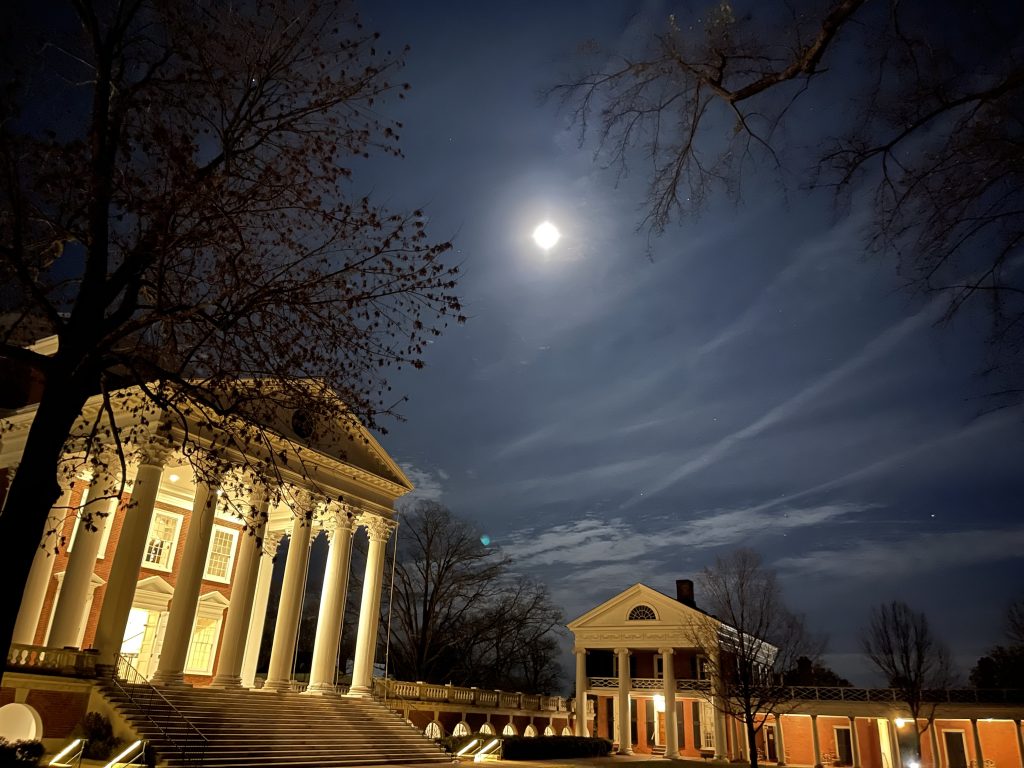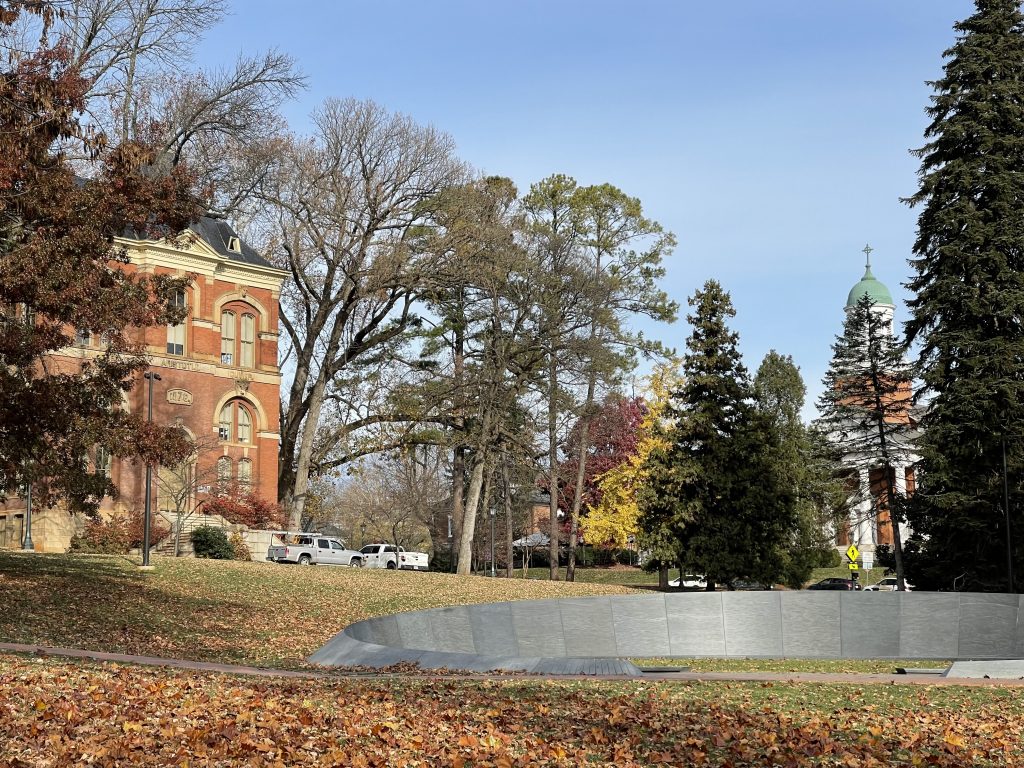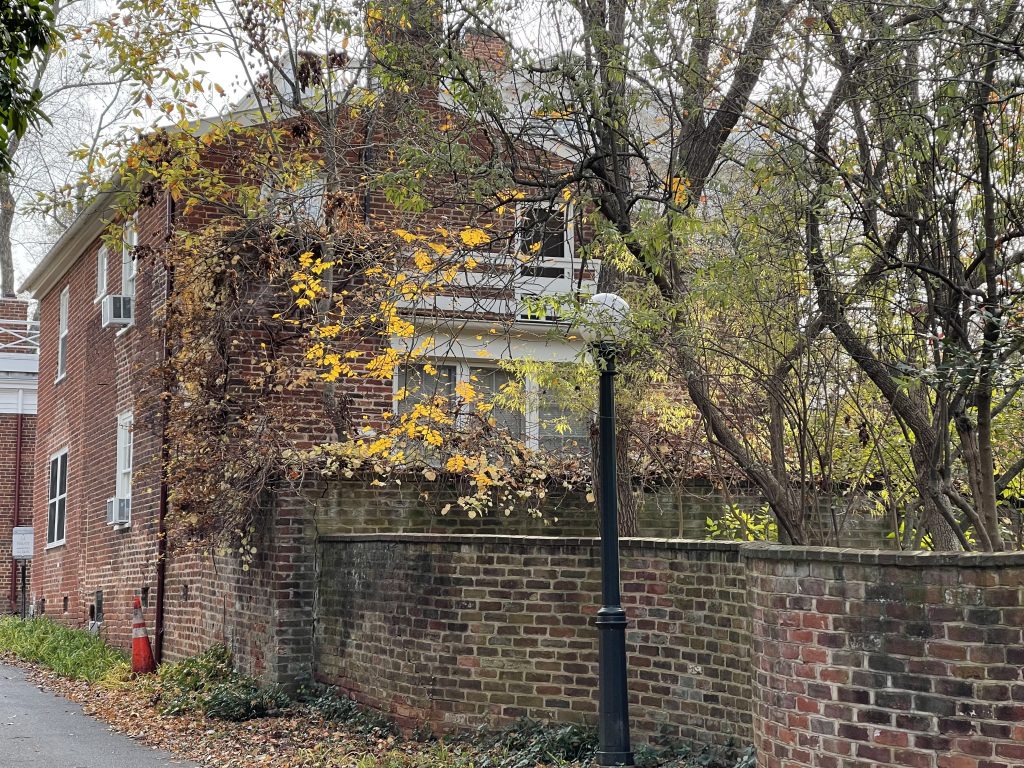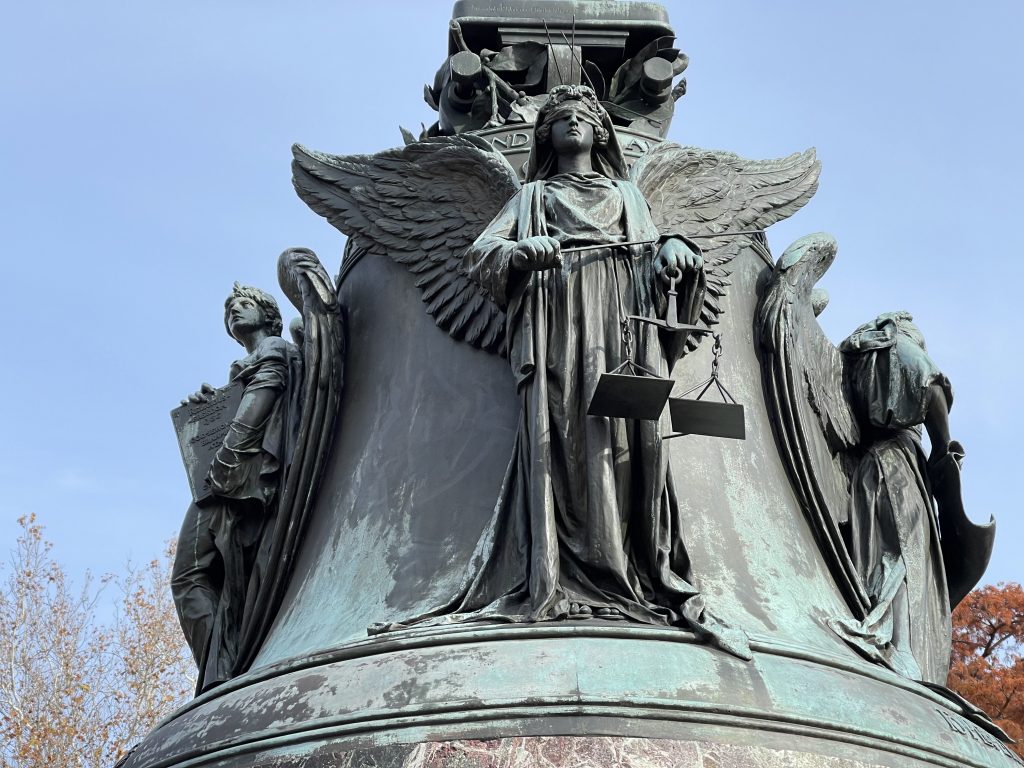
I was in Charlottesville this weekend. The last time I visited was before the pandemic. Much was the same—the Corner will always be there, even if some of the restaurants are not; the Rotunda still stands above the Lawn; the Virginia Glee Club continues to spread harmony, love and brotherhood.
And yet: much has changed. The Glee Club is surging in membership, but off a small base due to pandemic attrition. Masks still abounded, though the positivity rate at the University among students is minuscule (less than 0.5%). And it was difficult to see the Rotunda and the Lawn without the overlays of the fascist torch march of August 2017, or the protests for racial justice in 2020.
In this context, the Memorial to Enslaved Laborers looks even more like what it is: simultaneously a good first step to establishing a dialog of truth and a small but inadequate corrective against 200 years of corrosive white supremacy.

It was in this frame of mind that I revisited the Lawn in the dark, when the abstract promise of freedom was most believable, and then again in the Sunday morning sun, where I could see the temples of learning rising above the walls, gardens, and outbuildings where laborers, enslaved and otherwise, supported the faculty and students who would, in 1861, raise a Confederate flag above the dome of Jefferson’s temple of knowledge.

If America is a contradiction, it is in many ways due to Jefferson himself, who argued for the unfettered power of the mind over religion and tyranny even as he fettered his fellow humans. The contradiction is evident in his greatest accomplishment, where a great University can be seen to carry the shadows of the slaves who built it.
So it is that I find myself, with Jefferson, trembling when I reflect that God is just.
And yet, as Jefferson sought to continually improve, never satisfied with his house, his writings, or the state of democracy, so must we continue to iterate on his works. Because the plain truth is that the University’s symbol as a temple of knowledge is the more profound for having arisen out of its beginnings as a school for privileged white men. And it has arisen, as is readily apparent by even a cursory glance at the current student body, to say nothing of a dinner spent speaking with them. My neighbor at our table was a strikingly lovely first generation college student from New York, who was a history major, an archivist at the Small Special Collections Library who had accessioned the latest round of Glee Club historical materials, and a powerhouse low alto. The kids, as Pete Townsend said, are alright.
And so is the Glee Club. In the last five years I had sometimes worried about the musical output of Virginia’s Messengers of Harmony, Love and Brotherhood. But the strength of the vocal technique of the young men I heard last night was a massive step forward. Turns out that Frank Albinder knows how to teach young voices, if they’ll listen. And it also turns out that when you focus a group of young men on both singing and friendship, you build something stronger than the sum of the individuals.
And it was also profound, after making my way up the East Range, across the Lawn, past the Mews (an outbuilding behind Pavilion III occupied by enslaved persons, and then 100 years later by Harry Rogers Pratt, the conductor of the Glee Club, and his wife Agnes), by the Chapel, and then back up to the plaza that Stanford White built after sweeping away the ruins of the Rotunda Annex. On that plaza stands the statue of Jefferson atop four allegorical angels, representing Liberty, Equality, the Brotherhood of Man, and Justice. Jefferson’s back may be to Justice; she may have stood silently on an August night in 2017 where hundreds of men who sought to destroy Jefferson’s higher ideals waved torches, threw lighter fluid, and struck at a group of about twenty-six student protestors. But, by God, She is still there, and still holds the scales, and they will be balanced.

